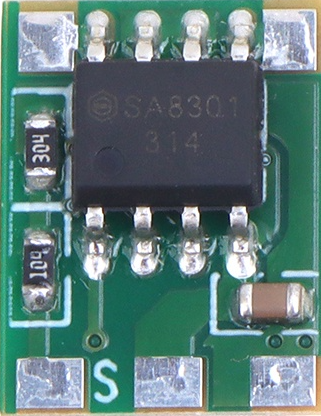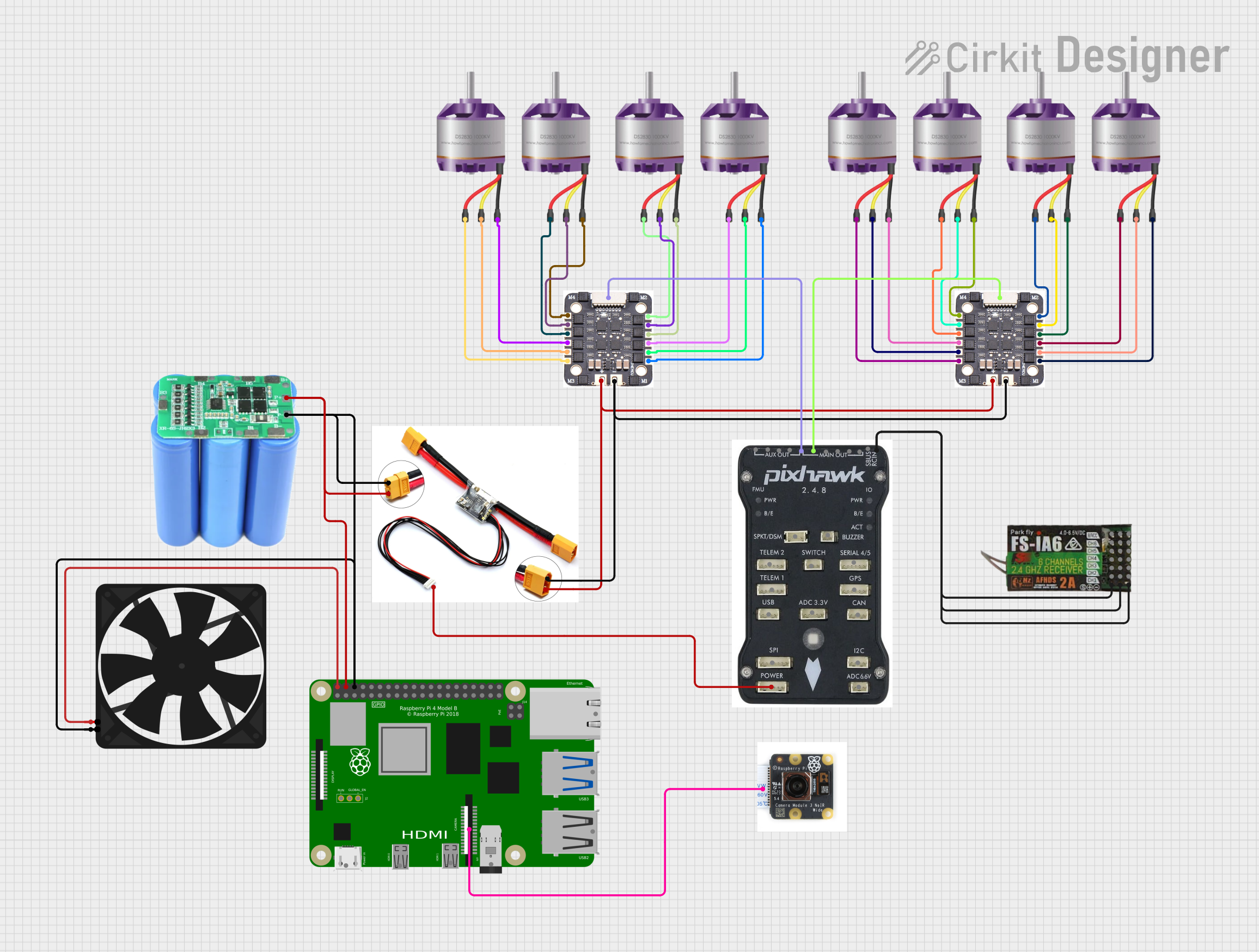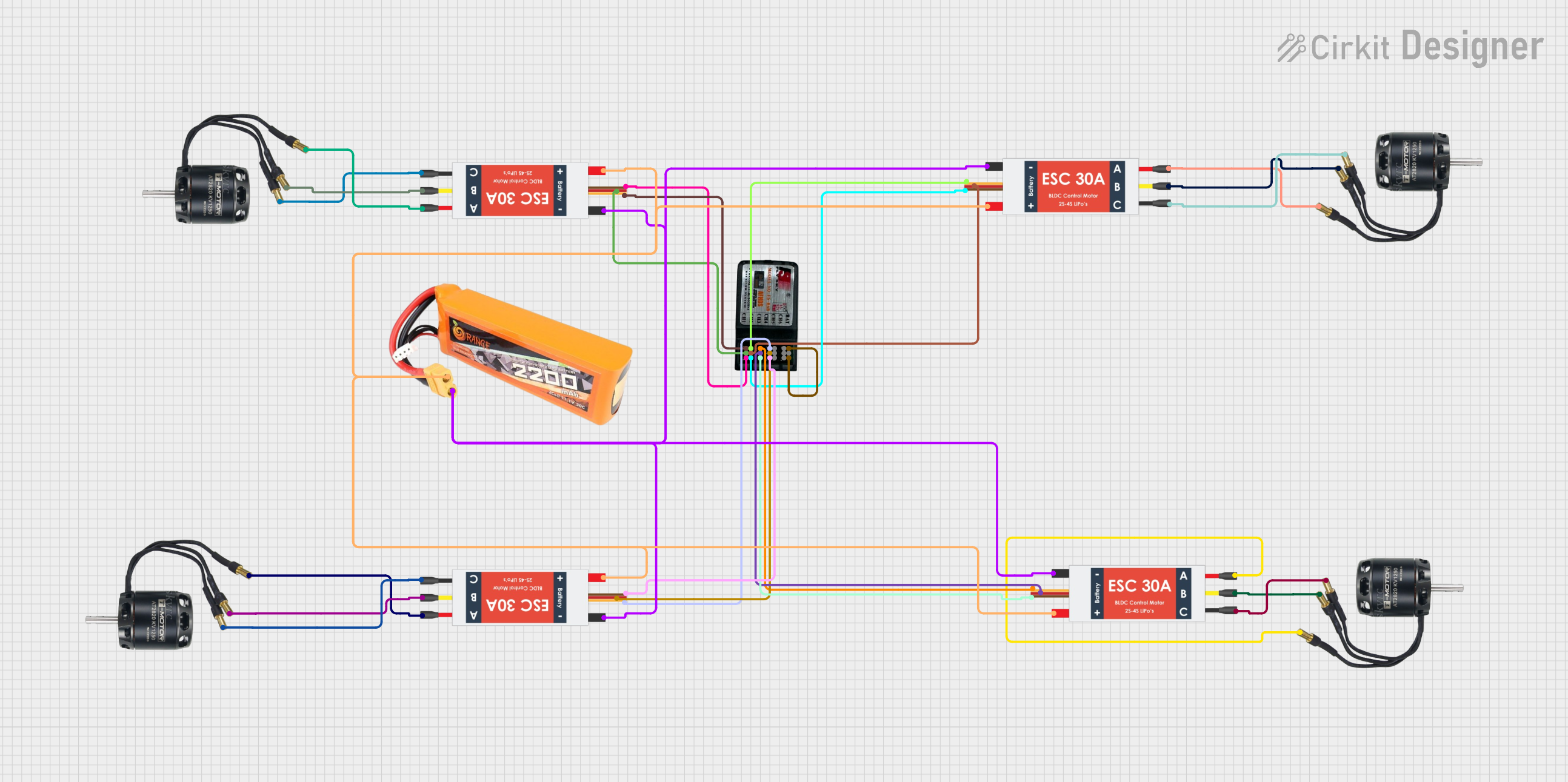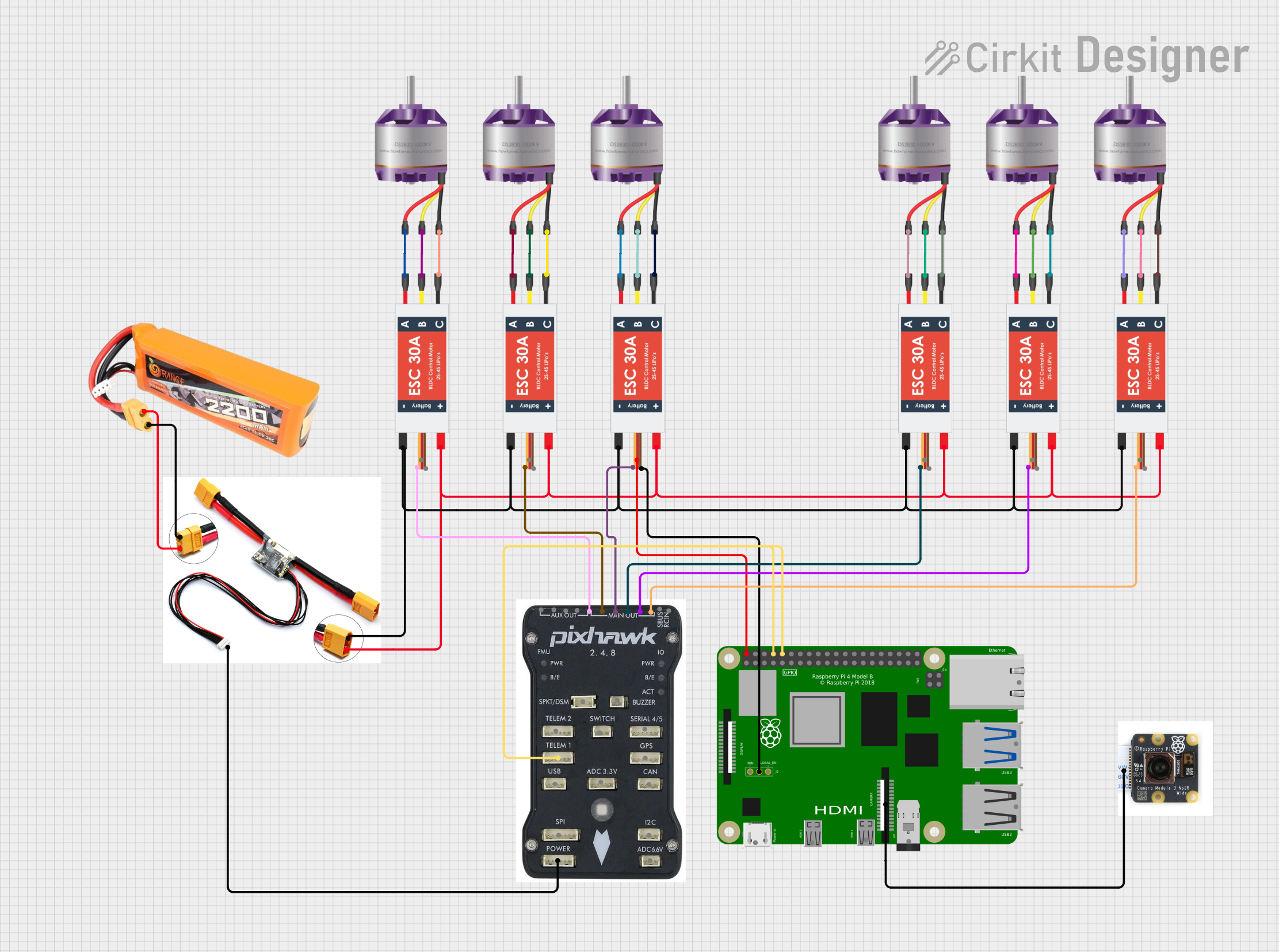
How to Use 1S/1A Brushed ESC: Examples, Pinouts, and Specs

 Design with 1S/1A Brushed ESC in Cirkit Designer
Design with 1S/1A Brushed ESC in Cirkit DesignerIntroduction
The 1S/1A Brushed Electronic Speed Controller (ESC) is a compact and lightweight device designed to regulate the speed, direction, and braking of brushed DC motors. Manufactured by Generic under the part ID "NoName," this ESC is ideal for low-power applications such as micro RC vehicles, drones, and robotics. It operates on a single-cell (1S) LiPo battery and supports a maximum continuous current of 1A, making it suitable for small-scale projects requiring precise motor control.
Explore Projects Built with 1S/1A Brushed ESC

 Open Project in Cirkit Designer
Open Project in Cirkit Designer
 Open Project in Cirkit Designer
Open Project in Cirkit Designer
 Open Project in Cirkit Designer
Open Project in Cirkit Designer
 Open Project in Cirkit Designer
Open Project in Cirkit DesignerExplore Projects Built with 1S/1A Brushed ESC

 Open Project in Cirkit Designer
Open Project in Cirkit Designer
 Open Project in Cirkit Designer
Open Project in Cirkit Designer
 Open Project in Cirkit Designer
Open Project in Cirkit Designer
 Open Project in Cirkit Designer
Open Project in Cirkit DesignerCommon Applications and Use Cases
- Micro RC cars, boats, and drones
- Robotics and automation projects
- Educational and DIY electronics
- Small brushed DC motor control in hobbyist applications
Technical Specifications
The following table outlines the key technical details of the 1S/1A Brushed ESC:
| Parameter | Specification |
|---|---|
| Input Voltage | 3.7V (1S LiPo battery) |
| Continuous Current | 1A |
| Peak Current | 2A (for short durations) |
| Motor Type Supported | Brushed DC motors |
| Control Signal Input | PWM (Pulse Width Modulation) |
| PWM Signal Range | 1ms to 2ms (standard RC signal) |
| Dimensions | 20mm x 10mm x 5mm |
| Weight | 2 grams |
Pin Configuration and Descriptions
The 1S/1A Brushed ESC has three main connectors:
| Pin/Connector Name | Description |
|---|---|
| Battery Input | Connects to a 1S LiPo battery (3.7V). Ensure correct polarity. |
| Motor Output | Connects to the brushed DC motor. Polarity determines motor direction. |
| Signal Input | Receives PWM signal from a microcontroller or RC receiver for speed control. |
Usage Instructions
How to Use the 1S/1A Brushed ESC in a Circuit
- Connect the Battery: Attach the battery to the ESC's battery input connector. Ensure the polarity is correct to avoid damage.
- Connect the Motor: Connect the two motor wires to the ESC's motor output terminals. If the motor spins in the wrong direction, reverse the connections.
- Connect the Signal Input: Use a microcontroller (e.g., Arduino UNO) or an RC receiver to send a PWM signal to the ESC's signal input pin.
- Power On: Turn on the power supply. The ESC will initialize and be ready to control the motor.
Important Considerations and Best Practices
- Voltage Compatibility: Only use a 1S LiPo battery (3.7V). Higher voltages may damage the ESC.
- Current Limitations: Ensure the motor's current draw does not exceed 1A continuously or 2A peak.
- Signal Calibration: Calibrate the ESC to match the PWM signal range of your controller for optimal performance.
- Heat Management: Avoid prolonged operation at maximum current to prevent overheating.
- Polarity Check: Double-check all connections to avoid reversing polarity, which can damage the ESC.
Example: Using the 1S/1A Brushed ESC with an Arduino UNO
Below is an example Arduino sketch to control the ESC using a PWM signal:
// Example code to control a 1S/1A Brushed ESC with Arduino UNO
// Connect the ESC signal input to Arduino pin 9
#include <Servo.h> // Include the Servo library to generate PWM signals
Servo esc; // Create a Servo object to control the ESC
void setup() {
esc.attach(9); // Attach the ESC signal wire to pin 9
esc.writeMicroseconds(1000); // Send minimum throttle (1ms PWM signal)
delay(2000); // Wait for 2 seconds to allow the ESC to initialize
}
void loop() {
esc.writeMicroseconds(1500); // Set motor speed to 50% (1.5ms PWM signal)
delay(5000); // Run motor at 50% speed for 5 seconds
esc.writeMicroseconds(2000); // Set motor speed to 100% (2ms PWM signal)
delay(5000); // Run motor at full speed for 5 seconds
esc.writeMicroseconds(1000); // Stop the motor (1ms PWM signal)
delay(5000); // Wait for 5 seconds before repeating
}
Notes:
- Replace
9inesc.attach(9)with the appropriate pin number if using a different Arduino pin. - Ensure the ESC is properly calibrated to the PWM signal range (1ms to 2ms) before running the code.
Troubleshooting and FAQs
Common Issues and Solutions
Motor Does Not Spin
- Cause: Incorrect wiring or insufficient power supply.
- Solution: Verify all connections and ensure the battery is charged.
Motor Spins in the Wrong Direction
- Cause: Motor wires are connected in reverse.
- Solution: Swap the two motor wires to reverse the direction.
ESC Overheats
- Cause: Motor is drawing more current than the ESC's rated capacity.
- Solution: Use a motor with a lower current draw or reduce the load on the motor.
No Response from ESC
- Cause: Incorrect PWM signal or signal wire not connected.
- Solution: Check the PWM signal range and ensure the signal wire is properly connected.
ESC Beeps Continuously
- Cause: ESC is not receiving a valid PWM signal.
- Solution: Verify the connection between the ESC and the microcontroller or RC receiver.
FAQs
Q: Can I use this ESC with a 2S LiPo battery?
A: No, this ESC is designed for 1S (3.7V) LiPo batteries only. Using a higher voltage may damage the ESC.
Q: How do I calibrate the ESC?
A: To calibrate, send the maximum and minimum PWM signals (e.g., 2ms and 1ms) during initialization. Refer to the ESC's specific calibration procedure if available.
Q: Can I control multiple motors with one ESC?
A: No, this ESC is designed to control a single brushed DC motor. Use separate ESCs for multiple motors.
Q: Is this ESC compatible with brushless motors?
A: No, this ESC is specifically designed for brushed DC motors. Use a brushless ESC for brushless motors.